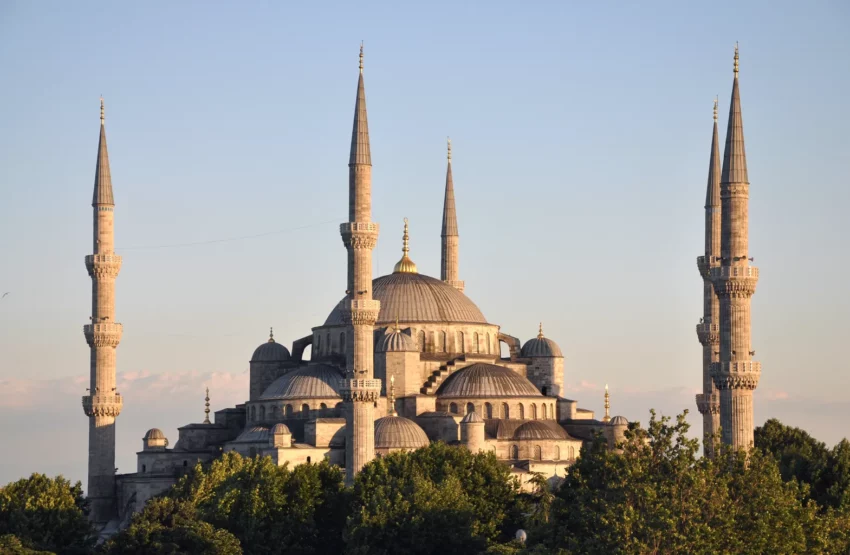Get your dose of History via Email
Introduction to the Blue Mosque
The Sultan Ahmed Mosque, commonly known as the Blue Mosque, stands as one of the most eminent monuments in Istanbul, Turkey. Built between 1609 and 1616 during the rule of Ahmed I, its Külliye contains Ahmed’s tomb, a madrasah and a hospice. Notable particularly for its massive dome, the mosque is an essential piece of the Istanbul skyline. The Blue Mosque derives its nickname from the blue tiles adorning its interior walls and draws visitors and worshippers alike, remaining a functioning mosque while also catering to the swaths of tourists who flock to see its architectural magnificence.
Architectural Features of the Blue Mosque
The Blue Mosque is revered for its architectural design, which incorporates both Ottoman mosque and Byzantine church features. Its architect, Sedefkâr Mehmed Ağa, was a pupil of Sinan, the chief Ottoman architect. At the behest of Ahmed I, the mosque was ambitiously designed to surpass the nearby Hagia Sophia in splendor. The structure is buttressed by four towering minarets, an element signifying the mosque’s imperial patronage, as only mosques endowed by the sultan were permitted this number of minarets at the time. Its exterior is further highlighted by the cascade of domes that descend from the central dome, adding to the mosque’s majestic silhouette.
The interior of the mosque is lined with over 20,000 handmade ceramic tiles, made in Iznik (the ancient Nicaea) with more than fifty different tulip designs. These tiles primarily feature various shades of blue, hence inspiring the mosque’s common name, and adorn the lower levels and galleries of the interior. Amidst these striking tiles are over 200 stained glass windows that allow natural light to filter in, complementing the blue hues of the interior. Moreover, the mosque’s chandeliers, common in mosques of the period, are lavishly decorated and include ostrich eggs, which were believed to prevent cobwebs from forming inside the mosque by repelling spiders.
Renovations and Preservation
The Blue Mosque has been subject to numerous restorations throughout its history, helping to preserve its original grandeur and ensuring structural integrity. The first significant restoration occurred during the tenure of Sultan Ahmed III, while subsequent renovations were completed under Mustafa III, Mahmud II, and most recently, during the 21st century. Furthermore, cleaning the tiles has proven to be a delicate process as their unique chemical composition makes them exceptionally prone to color change. Thus, dedicated preservation efforts are continuously required to maintain the mosque’s original appearance and structural soundness.
Role as a Tourist Attraction and Place of Worship
The Sultan Ahmed Mosque simultaneously serves as a tourist attraction and an active mosque, hosting five prayers daily and accommodating thousands of worshippers for Friday prayers. This dual role has initiated discussions regarding conservation and tourist access. Balancing the spiritual nature of the mosque with its status as a heritage landmark represents an ongoing challenge for conservators and administrators.
Cultural and Historical Significance
The Blue Mosque retains its significance as a historical and cultural icon. Its construction was initially controversial because it was funded by the Treasury, unlike most other imperial mosques of the period, which were constructed through the devşirme system that appropriated funds from the spoils of war. The mosque symbolizes a period of relative peace during Ahmed I’s reign when architectural achievements scored precedence over military conquest during the late stages of the Ottoman Empire’s classical age.
Today, the Blue Mosque is protected as part of the historic areas of Istanbul, a UNESCO World Heritage site since 1985. Its presence continues to impact the religious, historical, and cultural landscape of Istanbul, linking the city’s past and present with its iconic domes and minarets rising magnificently against the skyline.


1 thought on “Blue Mosque in Istanbul”